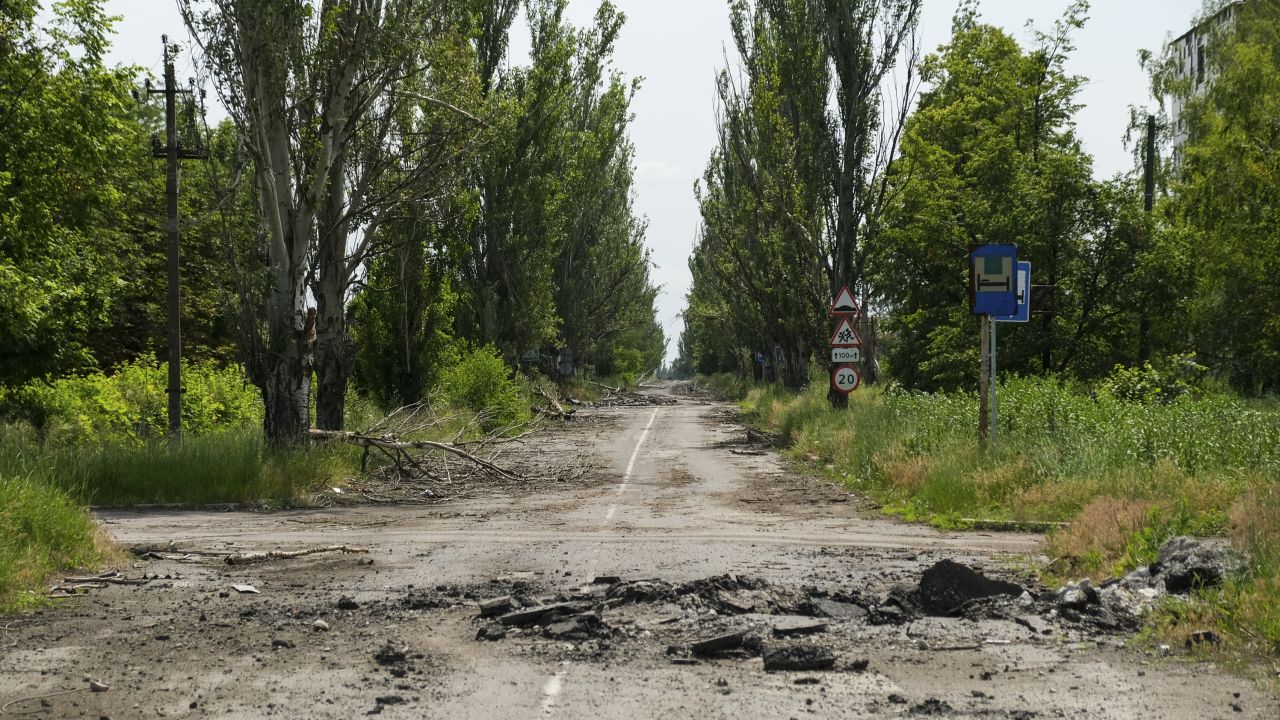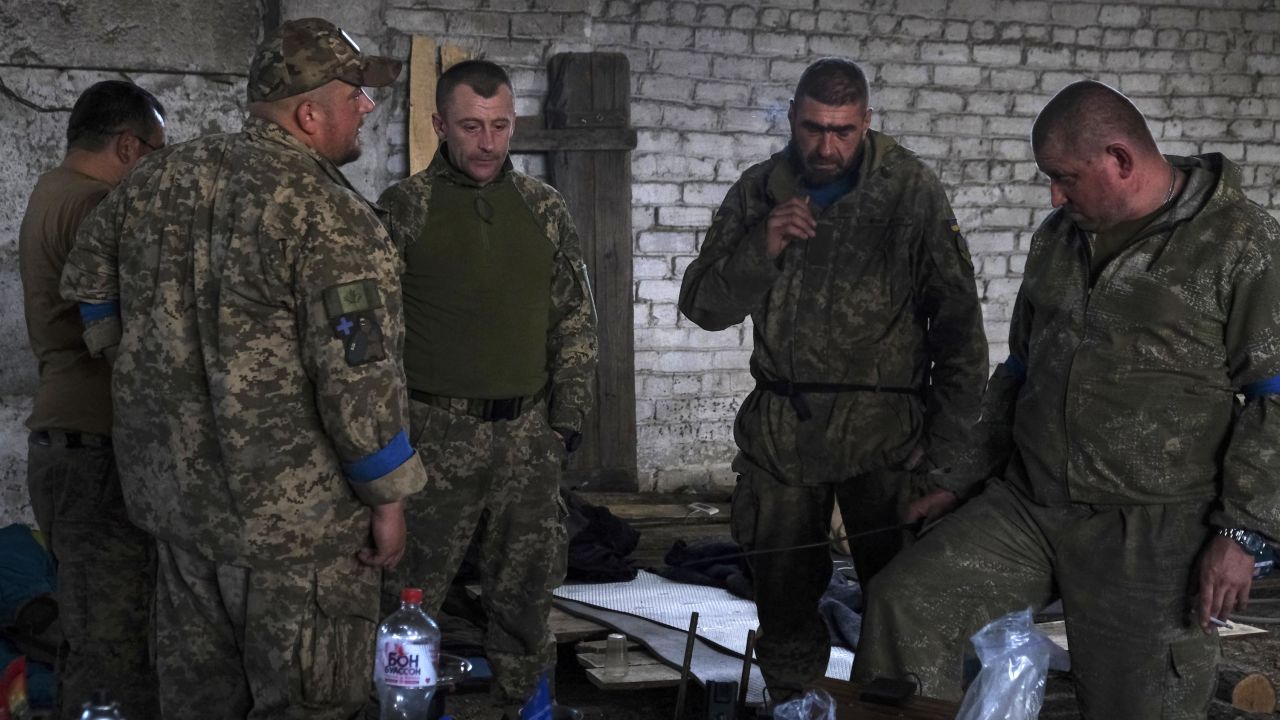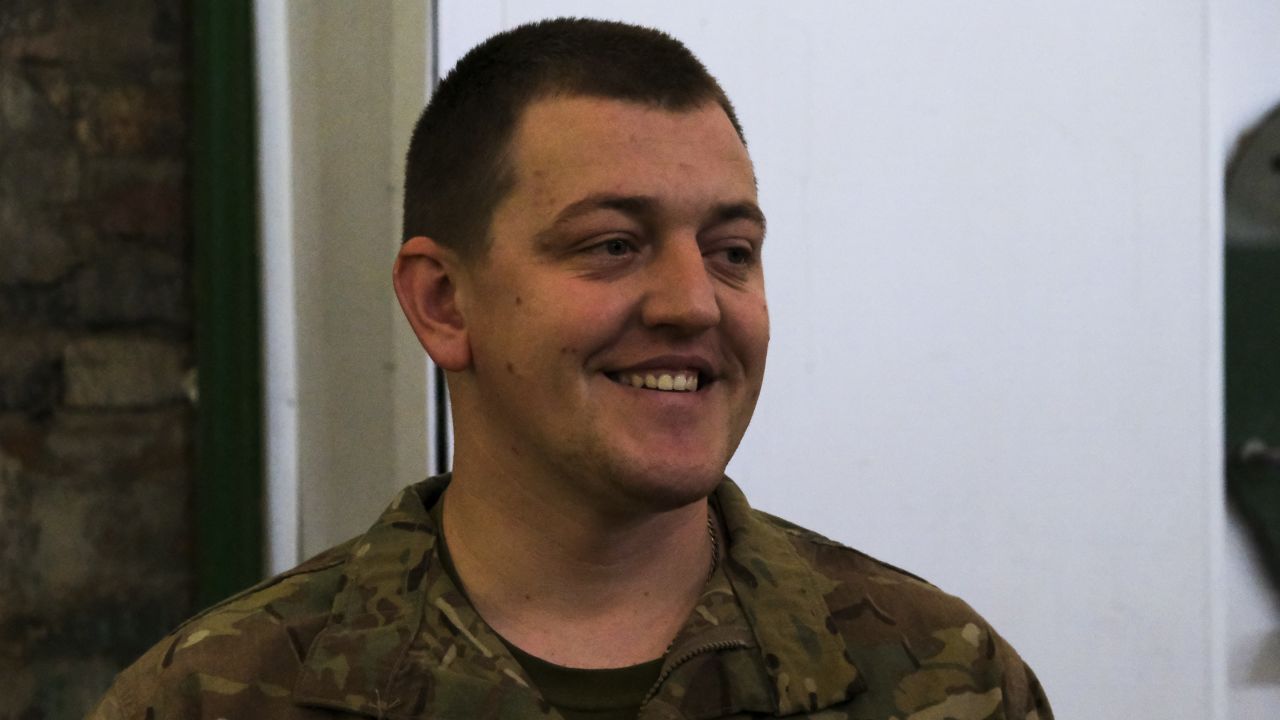Velyka Novosilka, Ukraine
CNN
—
Under clear and sunny skies, a Ukrainian soldier speeds down a long, straight road toward forward positions close to the front line.
“We have to go fast,” the soldier says, the urgency underlined by the near-constant thud of shelling and the threat of Russian drones relaying the vehicle’s coordinates to enemy artillery positions.
The soldier swerves to one side, parks under some cover and orders us to remain inside a nondescript building, now serving as a military barracks.
This is daily life in the frontline town of Velyka Novosilka in southeastern Ukraine. CNN was given unprecedented access to the secretive area, where Ukraine has been preparing part of the opening phases of its counteroffensive.
Immediately to the south, Ukrainian pushing and probing has produced some success, with the liberation of the villages of Neskuchne, Blahodatne and, more recently, Makarivka.
“It is very dangerous at the front, but we manage,” says a combat medic with the call sign Winnie.

Ukrainian forces have been working to stabilize some of the liberated villages but when CNN visited Velyka Novosilka, the situation remained very fluid. Russia, some soldiers said, was not going down without a fight.
“Our people are trying to knock them out of there, and they are trying to gain a foothold there,” Winnie explains. “There’s been shelling and our boys were wounded. One guy was seriously injured so we got him out of there alive and our medic provided him with qualified assistance.”
Velyka Novosilka, which has been without water, electricity or gas for a year and a half – and is constantly battered by shelling and strikes – is an oasis by comparison.
Winnie is one of several combat medics with the 68th Jaeger, one of Ukraine’s long-established brigades that has held this front line since early in the war. Now, reinforced by Western-trained units, armed with Western-supplied weapons, they are hoping to take back Ukrainian territory occupied by Russia.
“[The US-donated] MaxxPro [armored fighting vehicle] has saved my life many times. It saves our lives every day from shrapnel, shelling and bullets,” says another soldier, call sign Skrypal. “We are advancing, have cleared the village [of Blahodatne] and are moving on. The enemy is confused, does not know where to go, surrenders and retreats.”

It’s a long, hard and dangerous task and, even this early on in Ukraine’s offensive, it’s not difficult to foresee victory is likely to come at a heavy cost. To reduce it, Ukraine relies heavily on drone pilots to provide accurate reconnaissance.
“It is impossible to carry out an offensive without drones,” a pilot with the call sign Mara says. “There are many casualties. But with the help of drones, losses can be minimized as much as possible.”
The pilots operate in rear positions, scouting their enemy’s lines to identify the least fortified Russian positions and then feed that information to the infantry advancing in front of them.
“As an infantryman in the past I can say that the infantry offensive is very difficult,” the pilot explains. “The Russians also study us.”
“Unfortunately, [the Russians] know how to retreat and, unfortunately, they also know how to attack,” he adds.

Moscow is hoping to stop them using its tried and tested brutal artillery barrages and some of the soldiers here acknowledge Ukraine has already suffered some losses.
“Their artillery inflicts the most casualties on us and prevents us from advancing further,” Skrypal explains.
But for Winnie, the danger is part of the mission.
“We have no other way out,” he says. “Either us or them. But I think we will win.”

Velyka Novosilka sits on an axis on the southern front where Ukrainian forces have recently started to push, making advances that have boosted morale.
The 68th Jaeger Brigade’s deputy commander, Lt. Col. Vasyl Matyiev, says the outlook is favorable to Ukraine.
“The situation at the front is now stable. We are advancing every day, conquering more and more territories,” Matyiev says. “We continue every day, improving results. Not only our division, but also adjacent ones in this direction.”
But the fight has not been easy, he says.
“Fights are very tough. There are times when the enemy does not want to surrender to the last,” he says. “At the beginning, they had very good engineering structures, we passed them and are moving.”

Another big factor has been Russia’s superior air power, which has allowed Moscow’s forces to push back against Ukraine’s ground troops.
That superiority was on full display during the CNN team’s visit when the Ukrainian forces came under repeated attack by Russian Su-25 ground attack fighter jets.
The jets dropped 500-pound (227-kilogram) bombs, forcing us to take shelter.
“The enemy’s army aviation is used, they repeatedly launch, several launches during the day,” Matyiev says, acknowledging Ukraine’s difficulties on that front.
Kyiv’s forces, nonetheless, have been able to make some gains. However, analysts believe the main thrust of Ukraine’s counteroffensive has not yet been on display despite recent advances around Velyka Novosilka, elsewhere in the south and in the east of the country, around Bakhmut.
The Ukrainian government and military have refrained from making any announcements about the counteroffensive, saying simply that “plans love silence,” a motto Matyiev follows to the letter. He does however hint that more is on the horizon.
“Our offensive does not end here,” he explains.
“Our counterattack will definitely be successful,” he adds. “We believe in victory, we are moving towards our goal, we are advancing.”
Amid the destruction and violence of the war, an elderly lady slowly treks up the same road the Ukrainian soldier sped down earlier, just after lunch time.
With no vest or helmet – not even a hat for the sun – she drags a worn-out trolley along, waving down cars, hoping for a helping hand.
“I’ve been walking for about 30 minutes now,” says 67-year-old Tatiana, who only gave one name for safety reasons. “I once walked 28 kilometers (17 miles) and no one gave me a ride.”
She was born and raised in Velyka Novosilka, the town where her parents spent their final days. These are memories she refuses to abandon, along with the 400 or so of the frontline town’s last remaining residents – most of them elderly.

They rely on aid deliveries but few organizations risk such a dangerous destination, so Tatiana does it herself, she says.
“Volunteers rarely bring bread here. I usually take 10 to 15 loaves of bread and bring them,” she explains. “I also bring them more medicines.”
It’s an effort beyond measure, especially for her scarce means.
“I have a pension of 2,300 hryvnias ($62) and I collect what I can with this money,” she says. “I take various medicines – for headaches, heart, bandages, iodine, brilliant green. I spend about 800 hryvnias on medicines, the rest is food to feed the animals.
“Whatever is left is for myself.”
Velyka Novosilka may have been hollowed out by war, but Tatiana sees it as it once was and she’s doing whatever she can to keep that memory – and humanity – alive.
If the Ukrainian military continues to advance, her town might at some point be afforded some breathing room and her job may become easier. But it’ll still be a while before her burden is lifted.